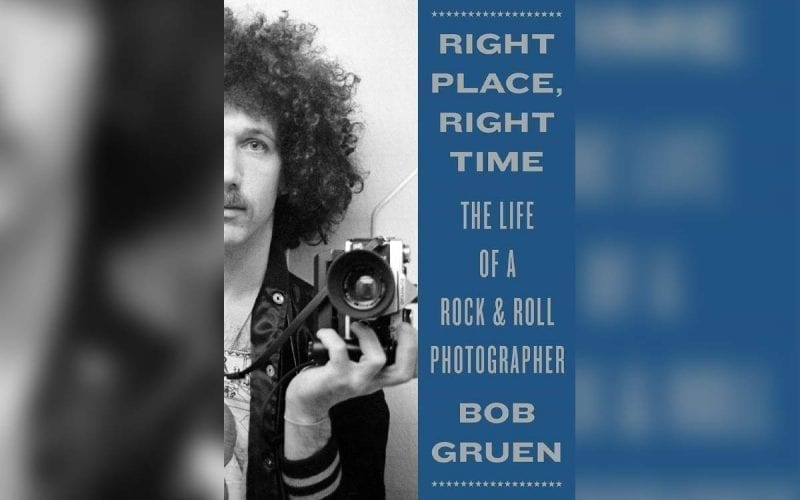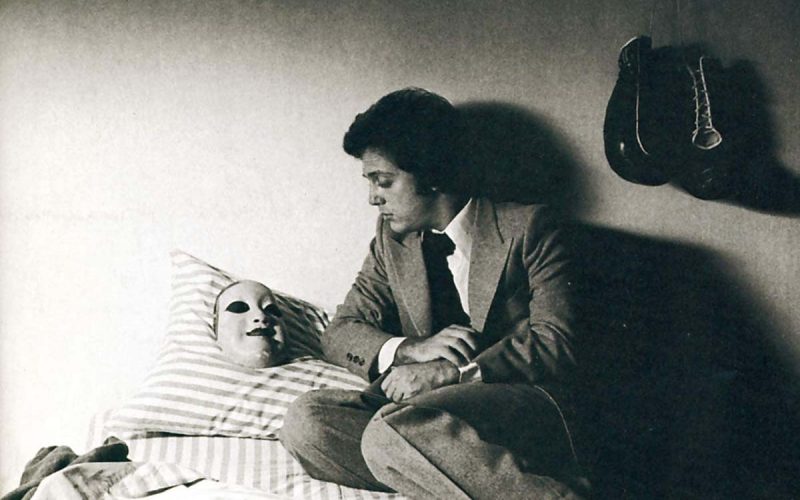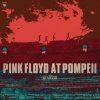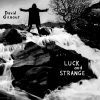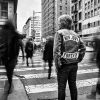
“For me, rock and roll is all about freedom. It’s about the freedom to express your feelings very loudly in public. And that goes for the band singing it loud and causing everybody else to get into that feeling, and then all the fans just screaming.”
Preeminent rock and roll photographer Bon Gruen’s shots of superstars worldwide have ended up on everything from posters to postage stamps, gallery walls to groupie t-shirts. Throngs of rock and photo fans flock to his exhibitions held in cities from London to Buenos Aires. The list of rock royalty captured by Gruen’s lens is long: John Lennon, Led Zeppelin, The Rolling Stones, The Ramones, The Clash, Kiss, The Sex Pistols, Sting, Bob Dylan, Blondie, etc., etc., etc.
The focus – and title – of Gruen’s latest book of photographs is Green Day (available now). Throughout its nearly 180 pages, the book takes fans behind-the-scenes and backstage for an all-access look at the trio which has sold millions of albums and spellbound millions of fans worldwide. I recently spoke with Gruen about the book, his background and the marriage of sound and vision.
Bob, good morning. How are you?
I’m very good.
It’s a pleasure to talk to you about this great book, so let’s jump into it. In the introduction to your latest book of, of course, fabulous photos simply titled Green Day, Billie Joe Armstrong writes that what you do “with a camera better than anyone else in rock and roll is capture a rock and roll moment at your best when you’re doing your worst.” And the “you” meaning the band, of course…
I hope so (laughs).
You, too, probably (laughs)!
I’ve had my ups and downs (laughs).
Of course. So, can you explain what you think Billie means by that?
Well, in rock and roll a lot of times there’s a lot of chaos and things going wildly in different directions, being created by people whose minds are going in wildly different directions. And I think that might be what he’s relating to.
This book, again simply titled Green Day, is, I believe, your 16th book…
Right.
…for a bit of background could you rattle off a few names of artists featured in some of your previous books.
Well, I have actually three books on John Lennon. My first in the 80s, and then a limited edition, and then John Lennon: The New York Years. There’s also a book on The Clash, a book on The Sex Pistols, Led Zeppelin, Rolling Stones. More recently I’ve done a book on The New York Dolls and Yoko Ono. And my big book – a monograph – is called Rock Seen – S.E.E.N. – like the things I’ve seen. That’s been in print. It’s actually in sixth printing now. It’s been out about eight years.
So, you’re still looking for your big break (laughs).
(Laughs) Yeah, actually. Fame doesn’t equal fortune (laughs). You don’t really make a lot of money on photo books. That’s not the kind of books that sell in the hundreds of thousands. It’s more of a catalog. You know I still live modestly, but I enjoy it. I certainly have a lot of fun.
Doing what you love and loving what you do, I’m certain. On page 14 of the Green Day book there’s a great backstage photo of Billie Joe wearing a Clash t-shirt. You mentioned The Clash in your long list. Speaking of t-shirts, arguably your best known photograph is the shot of John Lennon wearing the New York City t-shirt.
Right.
Can you talk about capturing that iconic image?
Well, actually I used to wear those shirts a lot. They were made, not by a store or a company, but by some guys who printed them themselves and sold them on the sidewalk in Times Square. So they cost five dollars. Which is why it’s kinda funny it’s become so well known because I used to buy one or two every time I saw the guys, and one night I was on my way to see John Lennon in a recording studio nearby and I bought one and I cut the sleeves off because I think that kind of gives it a more New York look. And I gave it to him as a gift. And it was actually a year later, he called me to take pictures for his Walls and Bridges album cover. And after we had taken a series of photos of his face – just close-ups of his face – for the album cover, he suggested we take some more pictures, so we’d have a publicity kit ready. So, since we were on the roof of his apartment – he had a penthouse apartment at the time and we were taking photos around the roof – and I remembered I gave him the shirt, and I said, “Do you still have that shirt I gave you last year?” And he said yeah, and he knew right where it was. So, it was kinda chaotic year, 1974, for John Lennon. You might of heard about the lost weekend, and I gave him the shirt just at the beginning of the lost weekend and I was taking the pictures at the end of that period. And he knew where the shirt was, and he went and got it right away, so I knew he liked it. I knew he had kept it with him, and he knew where it was. We had no idea at the time it was gonna become as iconic as it has. You know, there’s a lot of pictures of John Lennon out there, and I’m kinda surprised and pleased. It’s kinda like winning the lottery to have that picture to be one of the most well-known.
And then of course one of them ended up on a postage stamp.
One of the pictures we took for the album cover. One of the close-ups of his face just became a U.S. postage stamp last year. That’s kind of a great honor. And they look great. It’s funny because I use them. Whenever I send an envelope with a stamp, which is still once in a while (laughs). I send things to my granddaughters. And I just love the way the stamps look. And sometimes people send them to me, and pulling them out of the mailbox and just seeing John’s smiling face is a really nice, warm feeling. And I’m really glad I could contribute that.
That’s fantastic. In the preface of the book, you write, “I’ve always been into loud, fast rock and roll and Green Day delivers.”
Absolutely!
Take us back to your, what I call, proverbial Beatles on Ed Sullivan moment…
(Laughs)!
…I know you know what I’m talking about.
Oh, actually now that you mention it, I remember the moment. And in fact, I was in college in Illinois at the time. I didn’t really have that much AM radio. I had no idea that there was a Beatles. It was a Sunday night. I went out to dinner with friends. It was the first time I was going out to a really fancy restaurant in a hotel. But that was in southern Illinois, so it really wasn’t a fancy hotel (laughs). But anyway, I remember walking in. It was like a Raymond Chandler kind of hotel lobby. Like big, dusty old couches that looked like they hadn’t been sat on in 20 years. And in the far side of the lobby was a TV. And people were screaming on the TV. And I went over to see what was going on and that was my first Beatles moment. And I just stood there and stared and said what is this (laughs)? But you see, for me, rock and roll is all about freedom. It’s about the freedom to express your feelings very loudly in public. And that goes for the band, you know, singing it loud and causing everybody else to get into that feeling, and then all the fans just screaming. For me, the moment of rock and roll is that moment when everybody’s screaming “Yay!” And they’re not thinking about paying the rent or where they have to go tomorrow. They just have their hands in the air and they’re screaming “Yay!” And that moment of freedom is what rock and roll is all about. And that’s why it’s so popular all over the world. It doesn’t matter what lyrics you’re singing. If you get to that moment where everybody just feels free, that’s what it’s all about. And I think that Green Day delivers. They hit the stage running and they just keep running for two-and-a-half to three hours.
I’ve had the pleasure of speaking with those guys.
So, you know how funny they are, too. They have a great sense of humor. I remember when they put out – I think it was American Idiot or one of their albums – and you know they use explicit lyrics. They use the same language that their fans use. And they don’t clean it up a lot because their fans don’t, and the general population doesn’t. But Wal-Mart does. Half of the records sold in the United States is sold by Wal-Mart. And they don’t sell records with explicit lyrics. So, many bands make a G-rated album so it’ll fit into the Wal-Mart rules and they can sell a lot more records. But Green Day wouldn’t change their record. They said, this is our record, this is the way it is. And what Billie Joe said is that if Wal-Mart thinks it’s dangerous, they could just movie it to the other side of the store and sell it with the guns and knives and the other dangerous things they sell. So, to me that’s common sense, and it’s also funny.
You write in the book that Green Day – and I’m quoting here again – “may have become successful, but they never stray far from their street roots.”
No, they don’t
Talk about – I guess – your shutter roots. I’m trying to get a little more background on you. When did you first get into photography?
Well, actually I learned photography from my mother. When I was very little, about five years old, she took me into the darkroom. My mom was a lawyer, an attorney, but her hobby was photography. By the time I was eight they gave me my first camera. I really took to it. I became the family photographer. Which is good training for rock and roll because you have to learn how to get five or six people in a dysfunctional group to all look happy at the same time (laughs). So, I had a lot of practice with my family. And then after high school you know there was the idea in the 60s of turn on, tune in and drop out. And, basically that’s what I did. You know my parents were kind of pushing towards a career where you wear a suit and tie and go to an office. Being lawyers, they thought that’s what people should do. And I knew that I couldn’t do that because I tried a couple of times and the 9-to-5 didn’t really work for me because I couldn’t do the nine o’clock part (laughs). And so, I started living with a rock and roll band. Still taking pictures and eventually they got a record deal and the record company used my pictures and one thing led to another and I’m still taking pictures today.
And here we are today. Is this book laid out in any particular order? Chronologically? On stage?
Kind of chronological, although we set the fans section in the middle. It’s also somewhat chronological, but that could’ve gone throughout the book, but we thought it better to keep the fan pictures in one section to kind of emphasize that. But otherwise it’s pretty chronological. I met Green Day 25 years ago. So, the first pictures are the first time I saw them in person at Don Hill’s club in New York. I became aware of them a few months earlier when I saw them on TV when they were at Woodstock and they got into a mud fight (laughs). And I thought, who is this band (laughs). And then actually the first time we saw them on an awards show (drummer) Tre (Cool) climbed up in the scenery. You know, just some stage decorations. But he climbed up in it and it was swinging back and forth, and everybody thought it was gonna fall over and quite possibly injure him because he was 20-feet in the air. That’s the first time I saw Tre acting normal (laughs) because that’s what he does normally. He’s a very loose cannon and it rolls around and you never know what he’s gonna bang into. But he’s always fun, and so far he hasn’t had any catastrophic accidents, although I have no idea why not because he does have some catastrophic tricks he pulls (laughs).
Let’s hope we’re not jinxing him here (laughs).
Yeah, I know.
I think my favorite photo in the book the one at Green Day’s induction into the Rock and Roll Hall of Fame…
Oh, where they’re playing with The Beatles (laughs). That’s quite a lineup. Joan Jett, Miley Cyrus, Paul McCartney and Ringo Starr. They were happy that night.
Talk a little bit more about grabbing that shot.
I’ve always been excited about the Rock and Roll Hall of Fame. You know there’s a lot of controversy about who’s in and who isn’t. There’s a lot more people who aren’t in the Hall of Fame who should be than the people who are in. For me, what I really like about the Hall of Fame is when I visit and I see parents talking to their kids about the exhibits and talking about how they were inspired by the music in their youth and passing that onto their children. I think that’s what the Hall of Fame is all about. And I think it’s a great thing for the people who do get in because you have to be in the business for 25 years and a lot of people at that point in their career are not having the success that they had at the beginning of their career. And to be able to add Rock and Roll Hall of Fame artist to the beginning of their advertisements for their shows brings a whole new audience in. Brings them a whole lot of respect. So, I’ve always been in favor of the Rock and Roll Hall of Fame, inspite of all the controversies. And when Joan Jett and Green Day were being inducted the same night, that was very exciting for me. Those are two of my favorite bands. It was out in Cleveland and Green Day was actually having a special private show two days early, so we went out to Cleveland for a couple of days and joined the festivities. And it was a great night all around.
Quick interjection here. A personal one. I was producing Rockline, the nationally syndicated show at the time, and I was fortunate enough to be invited to the grand opening of The Rock and Roll Hall of Fame. I’m sure you were probably there as well. The concert…
Oh, when Dylan and Bruce (Springsteen) and everybody played. That big night. Yeah, I was there. In fact, I got engaged that night. That was the night I proposed to my wife.
Wow, that’s great! Yeah, that was obviously a tremendous honor. And, we were fortunate enough – Rockline – to be the first nationally syndicated show to broadcast out of the studio at the top of The Rock and Roll Hall of Fame. Very fond memories, of course. Let me switch gears here again and ask you about the one that got away. Let me explain. Did you ever have a once-in-a-lifetime photograph be out of focus or over or under exposed to the extent that you couldn’t use it? Did you miss one?
Well, not that I remember. An important one.
That’s good!
Yeah, I mean there are loads of pictures that are out of focus or over or under exposed (laughs). We tend not to look at them, and luckily, I’ve had enough that came out okay. You tend to take a lot of pictures to make sure that you do have some that come out okay. But I don’t remember anyone where, like, if I had an assignment and the film was developed badly and it didn’t come out. There was actually, okay, there was a time when I took some great pictures in a concert of Bob Dylan when I didn’t have any film in the camera. Does that count (laughs)?
That does, yes!
There was a time when Bob Dylan wasn’t allowing any photography, and I was pretty good at being able to sneak into the concerts and I put cameras in my boots and a lense in my hood. And his record company actually gave me a ticket to go down there because they couldn’t get any photos from the concerts. I’d done a couple of shows. It was during the Rolling Thunder period. He was playing in Atlanta and I went down and I was in the show. In those days you had two cameras. One for black & white and one for color. When one runs out of film, you just switch to the other until that one runs out of film and then you change the film in both of them at the same time. And apparently, I had forgotten to change one of them. Because I was taking pictures. I had him right in the lens. It was like head to waist. He was looking in my direction. I was just banging off shots, one after another. Poster or magazine quality, and I just kept going. You know there was only 35 pictures in a roll, and after awhile it seemed like I had been taking a lot of pictures. Like, more than 35, and it kept going. And I checked – there’s a way you can turn the rewind knob – and I figured out that I hadn’t even loaded the film in the camera. So yeah, that was a mistake (laughs). Because I remember the pictures that I didn’t take (laughs). Fortunately, it lasted a little longer. I got some film in the camera. I do have some decent pictures from that night, but I don’t have that whole roll and a half with the prefect ones (laughs).
Yeah, that’s the kind of unfortunate experience that I was asking about.
Yeah, so that happens. Fortunately, not too often.
So, I understand the band is selling this book on tour as part of their merchandise.
They will in the Spring when they go on tour, yeah. That’s part of the idea. To get it out to more of their fans.
Which is a great idea, to add that to the merchandising. So, what’s next? What’s next for you? Any future exhibitions on the horizon?
Well, I have an exhibit right now at the Morris Museum in Morristown, New Jersey. It’s my first solo museum show in the U.S. It’s pretty elaborate. It’s got about 80 pictures, plus a teenage bedroom installation, which is something I’ve been doing at a lot of my exhibits where instead of just putting the pictures up on the walls as iconic moments, we show why I took them in the first place, which was for magazines and posters and (album) covers, and for people to live with. Because people cut out those magazines and put them on their walls, and they have photos of their heroes to inspire them. And so they made a really nice teenage bedroom down there in Morristown. That’ll be up until, I think, mid-November. Other than that, I’m working on a new book – a biography – and you know, hoping to have more exhibits and things like that.
And shooting more shots.
It’s interesting, by the way, to mention for Green Day it’s always been a mutual admiration. When I met them and I liked them, they got along with me as well. They always liked my pictures. They were very happy that I wanted to take pictures of them. I was never on assignment for them. I never got a call from their manager to do a job for them. They never licensed any of my pictures for their ads or albums or anything. It was always just fun for me and for them. After 25 years I thought, well let’s just package this all up and do something with them. It wasn’t just practice, you know (laughs).
That’s great. Two more quick questions for you Bob, and again, thank you for your time. I appreciate it. So, who’s next? Which singer or band is still on your bucket list that maybe you haven’t worked with?
Hmm, I haven’t really thought about that recently. I don’t know. I’ll have to find out (laughs). There was a band in Ireland that I liked a lot called The Stripes, but they broke up. Even though they were only 20 years old they had been together for 12 years already. I don’t know, there’s people that I see all the time that I like, although I’m not looking for bands. It’s not something I do. I’m not an A&R guy.
Okay, well something to think about. I’ll leave you with something to think about. Final, fun question for you here: which Green Day song title best describes your career so far? Would it be “Longview,” “Welcome to Paradise,” “Carpe Diem” or “Still Breathing?”
All four (laughs)! They really sum things up (laughs)!
Well that’s good. I picked a good list for you.
You did. Those are all good titles for me.
Alright, Bob. Well again, thank you for your time. Take care.
Alright, thanks a lot. Thanks for calling.


